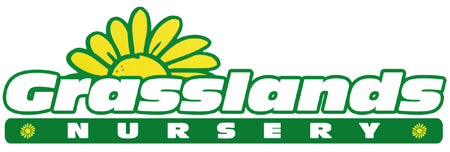Taxus baccata (English Yew) Hedging
Versatile and classic evergreen for dense, formal hedges
Taxus baccata, commonly known as English Yew, is a traditional and highly valued evergreen for hedging. With its rich, dark green foliage and dense growth habit, it creates a thick, impenetrable barrier ideal for formal or privacy hedges. Yew is one of the most versatile and long-lived plants, offering year-round interest and the ability to be easily shaped through regular pruning.
As a slow-growing conifer, Taxus baccata is perfect for creating neatly manicured hedges that can withstand heavy trimming, providing privacy and shelter. It is also particularly well-suited for topiary work, creating elegant shapes and structures in the garden. Its tolerance of shade makes it a popular choice for screening in less sunny parts of the garden or for urban environments with limited sunlight.
Key Features:
-
Evergreen foliage providing year-round colour and structure
-
Ideal for dense, formal hedging or privacy screens
-
Tolerates both sun and shade, making it versatile for different locations
-
Can be easily shaped and pruned to maintain a neat, compact form
-
Hardy and long-lived, with minimal maintenance once established
Growing Conditions:
-
Position: Full sun or partial shade
-
Soil: Well-drained, fertile soil; thrives in most soil types, including clay, chalk, or loam
-
Hardiness: Fully hardy throughout the UK, including cold regions
-
Maintenance: Prune once or twice a year to maintain shape and encourage dense growth; water regularly during dry periods while establishing
Ultimate Height & Spread:
-
Height: Can grow up to 10m if left untrimmed; typically kept to 2–3m for hedging
-
Spread: 1.5–2.5m
-
Slow-growing, with moderate growth rate when well-maintained
Taxus baccata is an excellent choice for anyone seeking a traditional, reliable, and dense hedge that provides privacy, shelter, and structure to the garden. Its longevity and ease of care make it one of the most popular choices for both formal and informal hedging schemes
Guide to Planting Field-Grown Root Balled Plants
Pros:
- Established Roots: Typically stronger, established roots ensure better initial growth.
- Immediate Impact: Larger plants provide instant structure and aesthetics.
Cons:
- Heavy and Bulky: Can be difficult to transport and plant due to size and weight.
- Seasonal Availability: Generally available only in the dormant season (autumn to early spring).
Preparation for Planting:
- Unwrap Carefully: Remove any packaging material, but leave the burlap or wire basket on.
- Keep plants moist: Plants should be kept moist until the time of planting.
Planting Process:
- Dig a Hole: Make a hole twice the width of the root ball and the same depth.
- Position Plant: Place the root ball in the hole, ensuring the top is level with the ground surface.
- Do Not Remove Root Sack: Leave the burlap or wire basket around the root ball. It is bio degradable and will rot away naturally.
- Backfill: Fill the hole with soil, firming gently around the roots to eliminate air pockets.
- Water: Water deeply after planting to settle the soil and avoid wilting.
Possibility of Losses:
- Initial Shock: Some plants may suffer transplant shock, leading to potential losses.
- Mitigation: Proper care and consistent watering during the establishment phase can minimise this risk.
Main Causes of Failure:
- Improper Planting Depth: Planting too deep or too shallow can stress the roots.
- Poor Soil Conditions: Compacted or poorly drained soil can hinder root growth.
- Insufficient Watering: Both under-watering and over-watering can lead to plant stress and failure. Strong wind can dry leafy pants.
- Pest and Disease: Lack of protection and monitoring can result in damage from pests and diseases.
Tips for Success:
- Stake Larger Plants: Support with stakes to prevent wind damage.
- Mulch: Apply a layer of mulch around the base to retain moisture and regulate temperature.
- Regular Monitoring: Check for signs of stress, pests, and disease, and address them promptly.
By following these guidelines and providing consistent aftercare, you can successfully plant and establish field-grown root balled plants in your garden.
Does the height include the pot?
No, we measure from the top of the pot to the tip of the plant except for some of the instant planted screens, in this case it will be stated in the description
How long does delivery take?
Most orders are delivered in just a few days, Smaller items are often sent with Parcelforce on a next day service, Larger items should allow up to 10 days due to the size of the items they often have to be sent on our own transport.
Where will you leave my plants?
We will leave your order at the front of your property, Parcelforce may
leave your items in a safe place if you let us know, Pallet couriers
will require a flat hard surface to deliver to, no gravel or soil, a
driveway or parking spot would be best. Most importantly Deliveries by
pallet courier will require access for a large truck (bin lorry sized)
to get near the delivery point. Deliveries sent on our own transport may come in a small van or larger truck.

